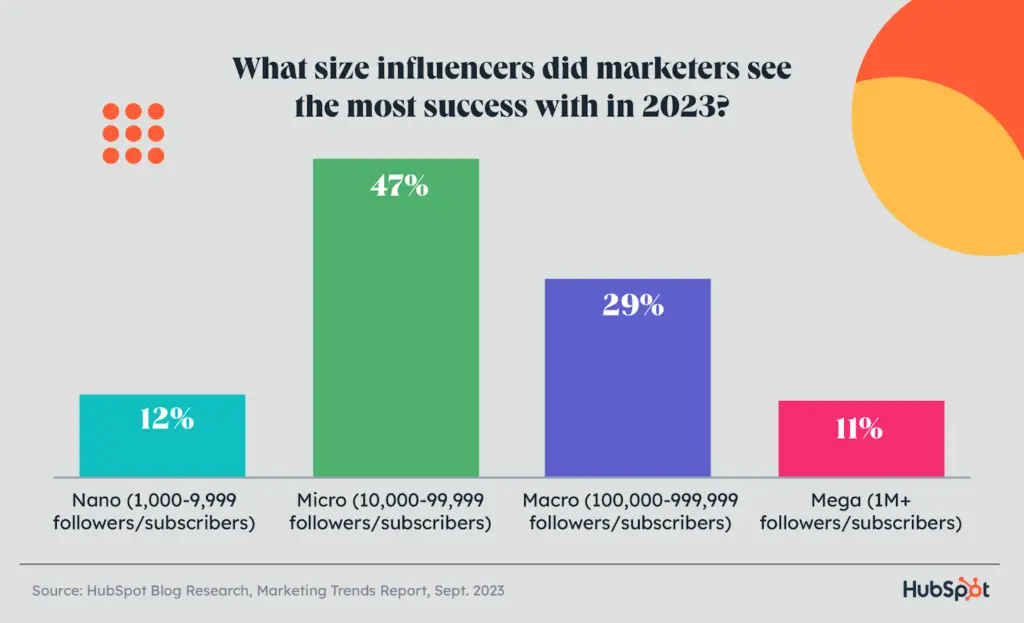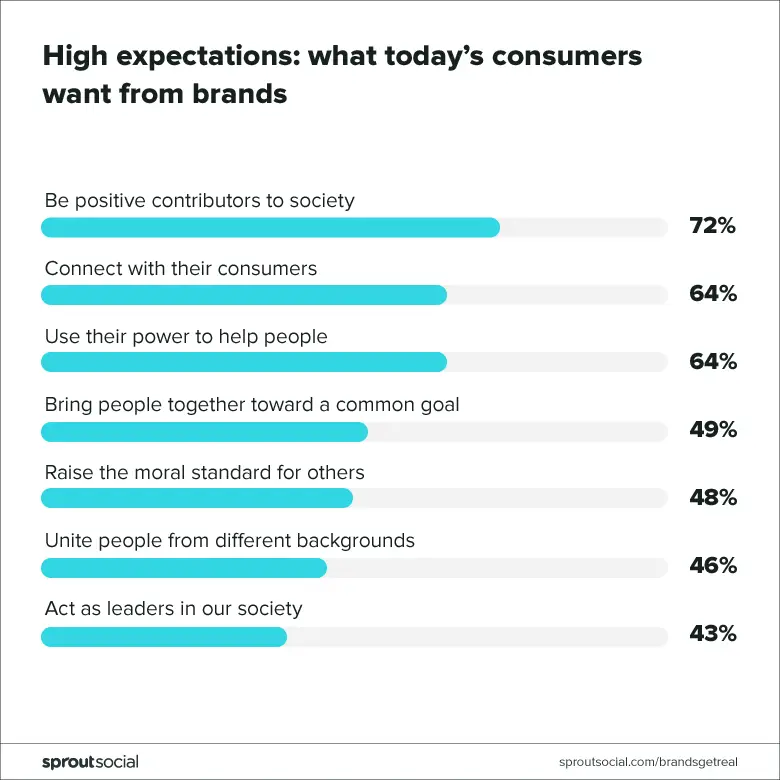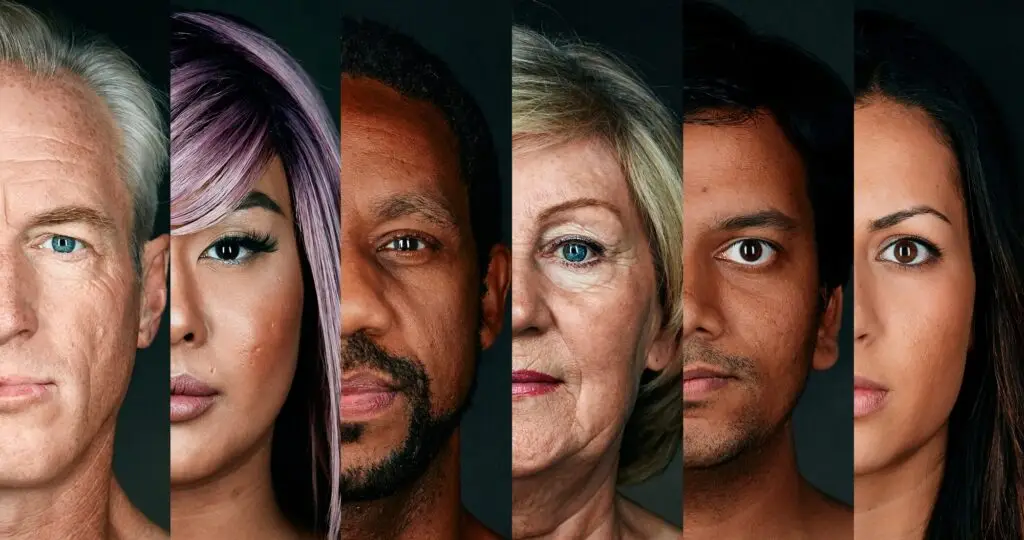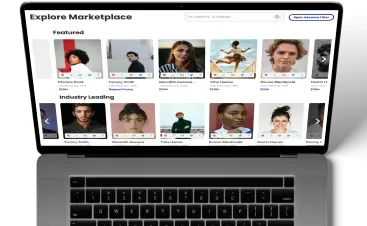Let’s be honest! Small and medium e-commerce businesses don’t have the budget for marketing and advertising that big enterprises do. But this doesn’t mean they stay behind. Many businesses are now turning to influencer marketing to gain an edge. Small to Mid-Size brands like Banza, ButcherBox, and Leesa are only a few examples of many that have seen significant success with influencer marketing.
Influencer marketing for e-commerce is a great way for businesses to make some noise and boost sales—without spending an arm and a leg. In this article, we will explain what is meant by influencer marketing for e-commerce, and how to do it. We’ll also share some tips to maximize your ROI by creating the best influencer marketing campaigns.
What Is Influencer Marketing for Ecommerce?
Influencer marketing for online commerce businesses is when e-commerce businesses team up with social media influencers to promote and sell products or services. You see, people can’t touch, feel, or try out an e-commerce product online. They need some sort of assurance to push them to make the purchase.
So what do people do? About 20 years ago, they used to turn to family and friends for words of advice. Now, 61% of consumers rely on their favorite influencers for making an online purchase. Yes, that is a lot!
This is what makes influencer marketing one of the most powerful tools today for e-commerce brands to set themselves apart while driving sales.
Advantages of Influencer Marketing for Ecommerce Businesses
Beyond boosting your bottom line, social media influencer marketing for e-commerce is a quick way to grow brand awareness, penetrate markets, and build loyal customers. Let’s discuss.
1. Influencers directly influence purchase decisions
In 2023, 33% more social media users made purchases influenced by influencers (than in 2022.)
72% of Gen Z and Millennials follow influencers on social media. And from 2019 to 2023, the percentage of Gen Zers and Millennials trusting social media influencers rose from 51% to 61%.
It’s clear that when influencers talk up a brand, they directly impact buyer decisions. But why do they have such a profound impact?
It’s because influencers are trusted. They know their followers and are aware of their struggles. They have built their trust over time by sharing their personal stories and genuine opinions. So, when they promote a brand through their own real experiences, they tap into the followers’ emotions, motivating them to make the purchase.
2. Brands tap into a highly targeted and engaged audience
Influencers have an established authority in a niche. Tapping into this ‘niche audience’ means your marketing efforts aren’t wasted on an uninterested audience.
Nano and micro-influencers give you access to a highly engaged audience. Typically, these smaller influencers have an average engagement rate of 3.86% to 4%, which is quite high from that of macro and mega influencers which is 1.2% to 1.3%.
The higher the engagement rate, the more likely the collaborative content will lead to more conversions. To find the right micro-influencers with a highly engaged audience, use Glewee’s Audience Insights. Described as the industry’s most comprehensive tool, it separates influencers according to audience size, demographics, and engagement.
With such detailed demographic data at your fingertips, you’re guaranteed to match with the ideal influencer for your brand. Check out this video to see how easy Audience Insights is to use.
3. Brands build a loyal and long-lasting consumer base
Followers trust influencers because they’ve proven they can be trusted, over time. So when an influencer endorses a brand, their followers relate that trust to that brand, too. For example, when Best Bodies For Life, a fitness-focused company, wanted to show their commitment to clean and healthy products, they partnered with fitness influencers on Glewee.
These influencers already had a loyal following of health-conscious women and mothers. With only 9 content pieces showcasing their daily use of the protein shake powder, the campaign garnered over 50,000 impressions and 15,000 likes. This boosted sales and built a loyal audience for the company.
Businesses optimize spending and reduce costs.Influencer marketing focuses on targeted spending, eliminating the need for wide-reaching, costly ad campaigns. Businesses invest in partnerships that directly reach target customers, reducing advertising costs and spending wisely.
Kickstart Social, a company specializing in digital marketing, had a high Cost Per Lead (CPL) of $26. With Glewee’s help, the company launched the “Weight Loss Video Campaign.” It focused on leveraging influencer-generated content (IGC) to improve advertising effectiveness and reduce CPL. Kickstart Social identified two highly targeted creators on Glewee’s Creators Marketplace and made 20-second video ads with each, which were then tested through Meta Ads Manager using A/B testing.
This strategic and highly focused campaign dramatically reduced their CPL to $5 in a day. Amazing, right?
4. Influencer marketing offers a high ROI
A targeted and engaged audience gives e-commerce brands higher chances of conversions. In fact, one in four marketers believe influencer marketing offers the second-highest ROI. Especially if you choose to work with micro and nano influencers, the lower costs allow you to achieve better results with a lower investment. It’s important with e-commerce influencer marketeing, to accurately check your factual progress using Glewee’s analytics allow for easy tracking of your influencer marketing campaigns. You get timely insights into your campaign
In e-commerce influencer marketing, tracking your progress with meaningful metrics is essential. Glewee analytics simplifies this process for you. We offer easy monitoring with timely insights, so you can proactively adjust for improvement and ensure high ROI.
How to Do Influencer Marketing for E-commerce Businesses?
Before jumping into any marketing strategy head-on, it’s important to do your homework, plan outcomes, and strategize accordingly. To get the best results from your ecommerce influencer marketing efforts, follow this direct strategy.
1. Determine your goal
What do you want from your influencer marketing efforts? Do you want to increase brand awareness, drive sales, or build customer loyalty? Decide on one goal and make sure to align it with your business objectives.
2. Have a target audience in mind
What problem does your product solve, and who does your product or service help the most?
Know your target audience, it will help you:
a. Identify the right influencers for your campaign.
b. Pinpoint pain points your product solves.
c. Build targeted marketing strategies that resonate with your target audience.
3. Find the right influencers
Locate and join forces with influencers whose values reflect your brand values and whose followers mesh with your target market. Finding the right influencer is challenging. There’s no denying it. However, it is key to a successful influencer collaboration.
Use this checklist to verify if an influencer is the right fit for your e-commerce business:
a. The influencer’s followers must align with your target demographic, including age, interests, and location. The followers must be spitting images of your potential buyers.
b. Don’t be fooled by vanity metrics like follower counts and impressions. Focus on real KPIs like engagement rate. A high engagement rate means an influencer has a loyal and active audience, which is more valuable than a large, unengaged following, and actually translates into conversions.
c. Scout their content for quality and relevance. It must match your brand’s style, tone, and values. Equally so, it should be authentic and consistent. For example, a fitness influencer should consistently feature fitness-related products. Take the GymShark and Whitney Simmons partnership as an example. Their mutual focus on fitness, health, and positivity reflects perfect alignment.
Whitney’s authentic promotion of Gymshark products, rooted in her own fitness journey, appeals to her audience, which matches Gymshark’s target market. This gives her endorsements credibility and helps build a genuine customer base for GymShark.
d. Check the influencer’s past brand collaborations. A history of successful partnerships, particularly in your industry, shows their capability to deliver results. Target influencers known for maintaining collaborations, boosting brand visibility, and increasing sales.
3 Ways to Find Influencers for Free
1. Use social media tools to refine your search
Hashtags, keywords, and other search filters can help narrow down your search and shortlist relevant influencers.
You can also use brand mention tools to find influencers who have already mentioned your business. Influencers familiar with your brand are ideal partners, as they’re likely already your followers and fans, may be they’ve already mentioned you to their followers.
2. Do a competitor analysis
It just makes sense. Why do your own research from scratch? Skip afew steps by paying close attention to what your competitors are doing.
See what kind of influencers they work with, how they leverage them on social media, and what kind of content they produce. This helps you in several ways. One you get a clearer idea of which influencers to work with. Plus you get insight into effective and ineffective marketing and content strategies.
3. Leverage Influencer marketing platforms
Influencer marketing platforms like Glewee can be a godsend. Search and find influencers for free, connect with influencers in your niche, and make unlimited campaigns with Glewee’s free to use influencer marketing platform.
With paid access you unlock advanced campaign planning tools, execution support, seamless communication channels with influencers, and enhanced discovery and vetting features. Plus, you gain valuable insights into campaign performance and audience engagement, so you can optimize your strategy for maximum ROI.
One you’ve shortlisted suitable influencers, plan a mutually beneficial pitch. It’s important for the success of any ecommerce influencer marketing strategy that you maintain clear channels of communication from day one. Talk over campaign specifics beforehand, openly discuss timelines, payment, and how you’ll measure success. During campaign execution, see what’s working and tweak your approach accordingly.
Once you find a good match, go for a long-term partnership to enhance your brand image and drive mutual success.
5 Essential Influencer Marketing Tips for Ecommerce Brands
As of 2023, there are 26.5 million ecommerce sites operating worldwide, with 13.98 million in the US alone. So a basic influencer marketing strategy won’t cut it.
You must get creative!
Here are 5 ingenious tips from successful ecommerce influencer marketing strategies to make sure your campaign stirs the pot and takes center stage.
1. Work with micro-influencers
Micro-influencers are proving to be more successful for ecommerce influencer marketing. In 2023, 64% of marketers chose to work with micro-influencers. Why?
- They are more approachable, and affordable, and give you access to a highly targeted audience.

- Micro-influencers have higher engagement rates because they operate in niche communities. For example, on TikTok, they have an average engagement rate of 17.6%.

- Micro-influencers are seen as more authentic and relatable. In fact, 82% of consumers are more likely to buy a product recommended by a micro-influencer.
Many companies have seen repeated success with micro-influencers. For example, to promote their new Coraline ornament for Christmas 2023, Laika Studios collaborated with Rachel @spookythankfulmerry. The micro-influencer, already renowned for her Halloween-themed content, creatively integrated the ornament into a uniquely designed Coraline-themed Christmas tree.
As she shared the outcome through her social media posts, it created a buzz around the product. Many of her followers loved the design and even asked for a tutorial.
2. Go deep, not wide
Your product may appeal to a large audience, but niching your marketing efforts to a niche audience can generate amazing results, like:
- Influencer messages resonate more deeply with a niche audience because of shared interests.
- Followers are more likely to have a higher intent to purchase, which leads to better conversion rates
- This approach is more budget-friendly bus has higher chances of ROI.
- With niche insights and feedback, brands can refine their products and strategies.
Let me explain using Gillete’s example.
Gillette’s audience mainly comprises millennials and the generations preceding them.
To penetrate Generation Z, Gillette partnered with female beauty influencers who directly resonated with the target demographic. By carefully selecting influencers, they not only reached the intended audience, but the #ChooseToSmooth campaign achieved a strong engagement rate of 2.2%.
3. Take a Storytelling Approach
75% of marketers believe that personal stories and personal experiences drive repeat sales and revenue.
Think about it! Which grabs you more? An influencer listing off product benefits or sharing how the product made their life easier? I’d sway toward the second option.
Dealing with post-partum hair loss, I’ve tried many (too many) products. What always convinces me isn’t just an influencer suggesting them but their own story of how a particular shampoo or oil regrew their hair post-childbirth.
This experiment on the subject by Joshua Glenn and Rob Walker proved how storytelling sways buyer decisions. The two bought inexpensive thrift store items and had creative writers invent stories about them.
By simply doing this, they managed to transform $128.74 worth of items into $3,612.51. That’s a 2706% increase in the value of the items. Yowza!

The strategic use of storytelling in influencer marketing has many benefits:
- People remember stories better than facts because stories evoke emotions
- They also help brands forge connections with their audience.
- Most of our choices are driven by emotions, and stories directly tap into those feelings.
Brands are now increasingly blending storytelling with influencer marketing to achieve similarly amazing results.
KIND Snacks teams up with influencers to highlight their core values and products. During Covid19, they switched from travel-focused to home-based content to stay connected and relevant.
The shift was central to their core strategy. It merged kindness and wellness into their story. The influencers talked about health and kindness, which matched KIND’s values directly.
This made the brand more human, relatable, and appealing. As a result, KIND boosted visibility, increased social media engagement, and built a loyal community around its brand values.
4. There is nothing better than User-Generated Content (UGC)
Motivate your influencers and their followers to create their own content featuring your products. Here are some reasons that are too good to ignore:
- UGC, by nature, feels more authentic than paid collaborations.
- Builds a sense of community and engagement around your brand.
- When influencers create authentic content and encourage their followers to do the same, so it can have a snowball effect.
- Fresh, authentic content generated by users improves your SEO rankings.
- Influencer partnerships cost, but follower-generated content delivers extra value beyond the initial spend.
- UGC is social proof that your product is being used and appreciated by real people.
Action camera brand GoPro launched the GoPro Awards. They also partnered with athlete influencers and created 380 pieces of content. After inviting users to submit their most compelling content captured on their devices, they drew submissions from extreme sports to family gatherings. They started getting 6000 pieces of content daily on YouTube.
The company even incentivized participation with cash rewards, gear, and the chance for social media spotlighting, generating millions of submissions. This not only boosted GoPro’s online presence but also attracted sales through genuine user experiences.
Using a similar approach, watch brand Daniel Wellington collaborated with a mix of high-quality micro and macro-influencers. The influencers shared personal stories with their watches and talked about their daily life and personal style.
The followers resonated with the stories and struggles and DW went from selling 30,000 watches to nearly 1 million watches annually. Their Insta followers also skyrocketed from around 30k to over 3.5 million during this time.
5. Champion a Cause
Consumers today are more socially aware and expect the same from brands. 72% of consumers prefer socially aware brands. They’re drawn to businesses that take a stand for social causes.
Here’s why we think this is a great idea for your ecommerce business:
- When influencers support the same cause, they spread the message to their followers, grabbing attention in a competitive market.
- Social messages ignite conversations and engagement on social media platforms.
- Build a sense of community around the cause and your brand.
- Differentiate you from competitors.
- Making your brand more memorable and different.
- Opens up collaboration opportunities with like-minded influencers and organizations.
- Positively impacts sales and revenue.

In 2017, Airbnb launched the #WeAccept campaign. They collaborated with influencers who had the same values and ethos to amplify the message of inclusivity and acceptance. The influencers shared their own perspectives and shared personal stories related to the campaign’s message.
This helped extend the campaign’s reach and encouraged their followers to participate using the #WeAccept hashtag. The genuine engagement and widespread participation created a ripple effect of support and engagement across social media platforms.
The campaign hit over 87 million views and topped Super Bowl advertiser hashtags. Digital marketing, influencer partnerships, and user stories also boosted Airbnb’s market standing.

6. Experiment with a range of content formats
Try unboxing videos, tutorials, live streams, and Instagram stories to keep things fresh and engaging. Instagram influencer marketing for ecommerce shows that different formats help highlight different aspects of your products.
Our reasons:
- You tap into new audience segments, broaden your visibility, and capture a wider market.
- Influencers are content pros. They know what their followers like. By seeing what formats work best, you can hone your content to match your audience better.
- Different content formats tap directly into what specific audiences like.
For example, Unboxing videos hype up your audience, making them excited about what you offer. Tutorials show off how valuable and useful your product is. Live streams engage your audience in real time, adding a layer of immediacy and personal interaction. Instagram stories give quick, engaging glimpses into your brand or offer, perfect for capturing attention with behind-the-scenes content or time-sensitive deals.
Beauty retailer Sephora mixes up its content to hit different goals and spark all sorts of emotions in its audience. Unboxing videos trigger new product excitement, makeup tutorials provide detailed application tips, live streams engage viewers with real-time interactions, and Instagram stories offer quick, engaging snapshots of products and promotions.
This way, the company enhances customer engagement and conversion rates and broadens its reach.

Unlock E-commerce Success
E-commerce brands of all sizes use influencer marketing to stand out and drive revenue. Success hinges on identifying influencers who align perfectly with your brand and needs.
This requires experimentation to discover the right combination of influencer marketing strategies and content.
By following these influencer marketing strategies and tips and learning from leading companies, build creative campaigns and set yourself apart while pumping up your sales.
To get ahead of the game, sign up for Glewee today and effortlessly discover and connect with over 10,000 pre-vetted influencers. Plan and launch your campaigns with ease and start making an impact now.
FAQs
a. Who is an ecommerce influencer?
A social media influencer with a notable following who promotes products and brands through their content. They earn their audience’s trust with genuine and authentic opinions through Reels, Stories, Videos, and other formats. Authenticity and trust built over time allow such creators to impact their followers’ buying choices significantly.
b. Does influencer marketing work for ecommerce?
Yes, influencer marketing effectively promotes e-commerce. When companies collaborate with influencers who align with their brand values and audience, they create highly targeted campaigns. This way, their content resonates with potential customers, encouraging them to buy.





